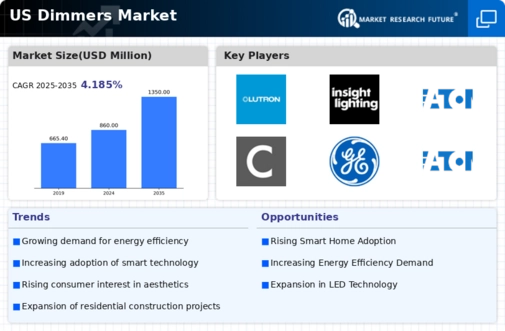The US Dimmers Market has witnessed substantial growth over recent years, characterized by increasing demand for energy-efficient lighting solutions and innovative technologies. As consumers become more aware of their energy consumption and look for ways to reduce their electricity bills, dimmer switches have gained popularity in residential, commercial, and industrial applications. The competitive landscape is shaped by a variety of players, including both established companies and emerging startups, each striving to deliver advanced features, superior quality, and enhanced user experience.
Innovation remains a key driver in this market, with companies investing in research and development to improve product performance, integrate smart home technologies, and provide sustainable solutions. As manufacturers aim to differentiate their offerings, understanding the competition becomes critical for making informed business decisions and for consumers seeking optimal lighting solutions. Lutron Electronics has solidified its presence in the US Dimmers Market through its strong reputation for quality and innovation. The company offers a wide range of dimming solutions that cater to both residential and commercial needs, providing consumers with excellent control over their lighting environments.
Lutron's strengths lie in its commitment to research and development, resulting in advanced technologies such as smart dimmers that can be controlled via mobile applications or integrated with home automation systems. Furthermore, Lutron places a strong emphasis on user experience, producing elegant, intuitive designs that appeal to a broad audience. The brand loyalty and recognition that Lutron has built over the years enable it to maintain a competitive edge, positioning the company as a leader in dimmer technology in the United States.
Honeywell International also plays a significant role in the US Dimmers Market, known for its diversified portfolio of products and strong market presence. The company leverages its expertise in building technologies and home automation to offer various lighting control solutions, making them compatible with modern smart home systems. Honeywell's strengths lie in its established brand, robust distribution channels, and strategic partnerships that enhance its reach within the US market. Additionally, the company has made several mergers and acquisitions to expand its capabilities and offerings in home and building technologies, further solidifying its competitive position.
Key products from Honeywell in the dimmer category focus on reliability, energy efficiency, and ease of integration with other smart devices, appealing to both homeowners and businesses looking to optimize their lighting solutions.
















